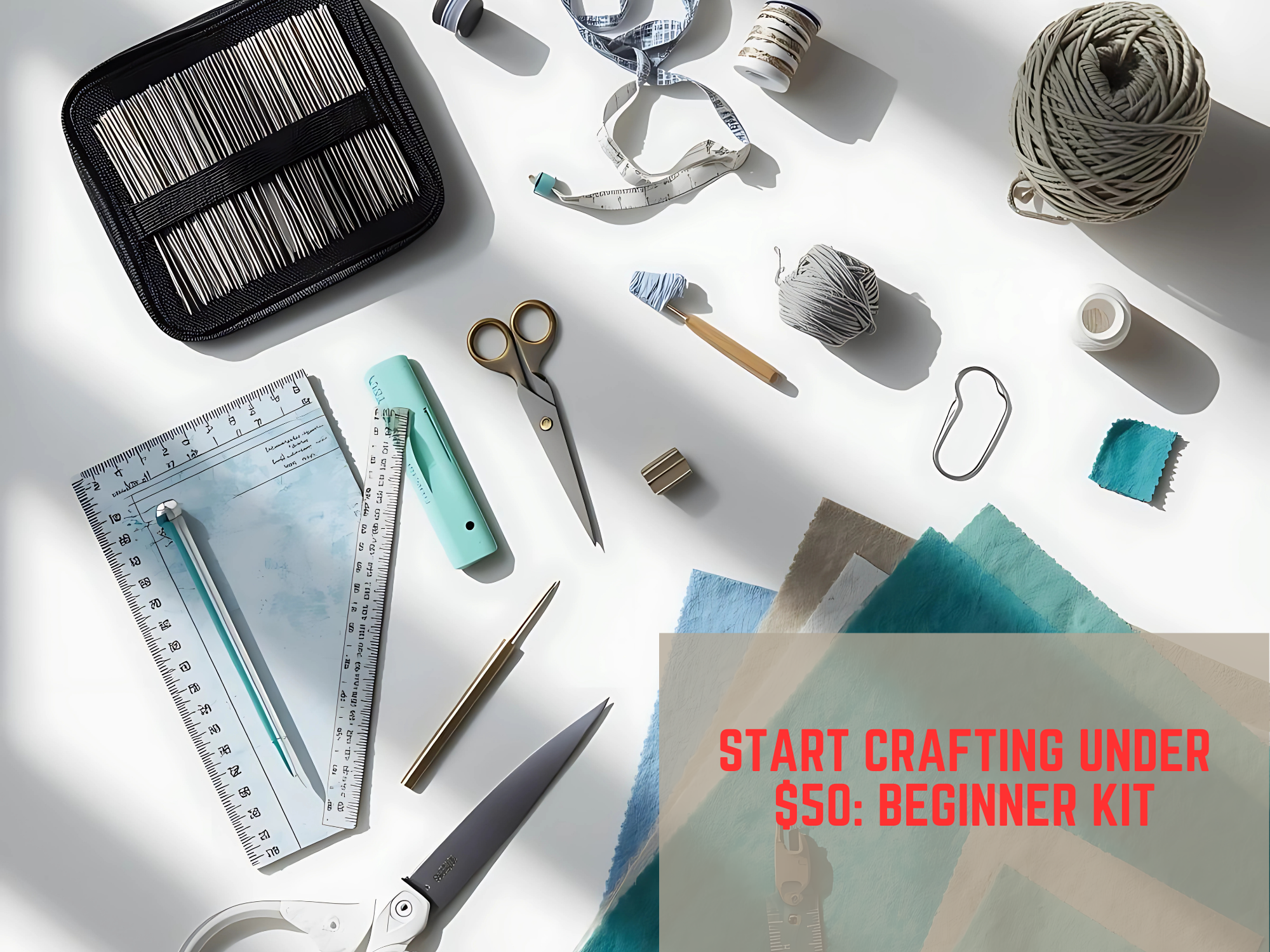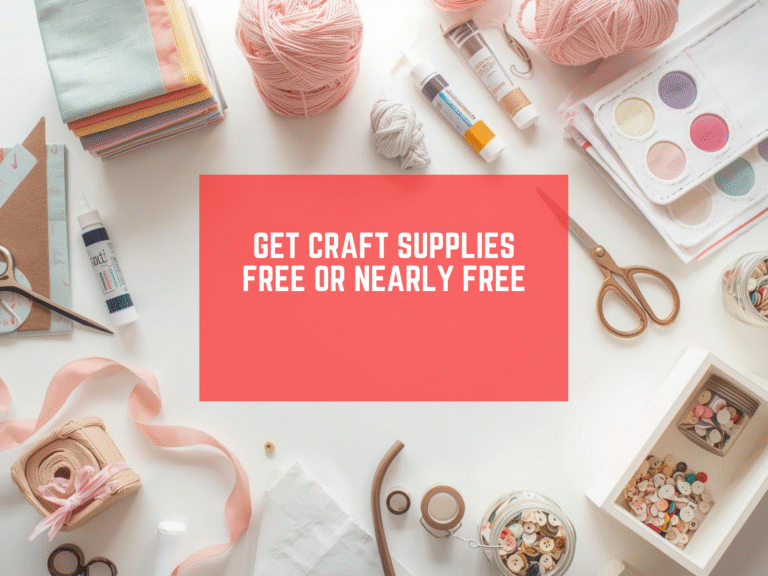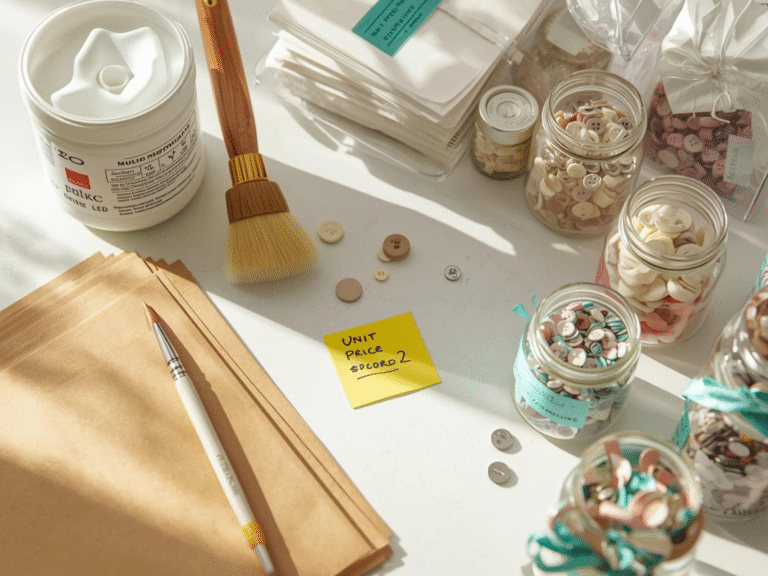You want to make things, but the cost feels scary. I get it. You see long lists of tools and think you must buy everything. You do not. This beginner guide shows you a simple kit that stays under $50. It also shows why many crafts start with only a few tools. Sewing by hand needs a needle and thread. Crochet needs one hook and one ball of yarn. You can begin small, learn skills, and add more later. This is real crafting for beginners that fits your budget.
Along the way, I link to a few trusted how to pages and to our own resources on Trusti ASG so you can learn fast and spend less.
Less Stuff, More Making
When you are new, less is more. A small set of tools helps you focus on the steps and finish your first project. Big tool sets can distract you. Think about the first month as practice time. You want easy wins, low cost, and simple projects you can complete in a night.
If you are curious about hand sewing basics like the backstitch, this quick guide from The Spruce Crafts is helpful for true starters.
The $50 Beginner Kit
Here is a simple list you can find at discount stores or online. Prices vary by store and season, so treat these as typical budget picks.
- Hand sewing needles, assorted sizes, 1 pack, about $3 to $4. Example listings often sit in this range. Walmart.com
- All purpose polyester thread, 1 spool, about $3.
- Small fabric scissors or thread snips, about $6.
- Straight pins or sewing clips, starter pack, about $3.
- Soft measuring tape, about $2.
- Seam ripper, about $2.
- Crochet hook, size H 5.0 mm, about $3. The Craft Yarn Council shows size H as a common starter size.
- One ball of worsted weight acrylic yarn, about $4.
- White school glue or tacky glue, about $2 to $3.
- Craft knife, about $4.
- 12 inch ruler, about $2.
- Felt sheets, small 5 pack, about $5.
- Mini hot glue gun, budget model around $4 to $10, plus a small pack of glue sticks around $3. Many Walmart listings show mini guns in this under $10 range.
Total target: around $50.
You can mix and match based on what you plan to make first. If you skip the glue gun this week, your cost drops even more. If you want the glue gun now, look for low temp mini guns at entry prices.
Two Skills You Can Start Today
1) Hand Sewing: Needle, Thread, Fabric Scrap
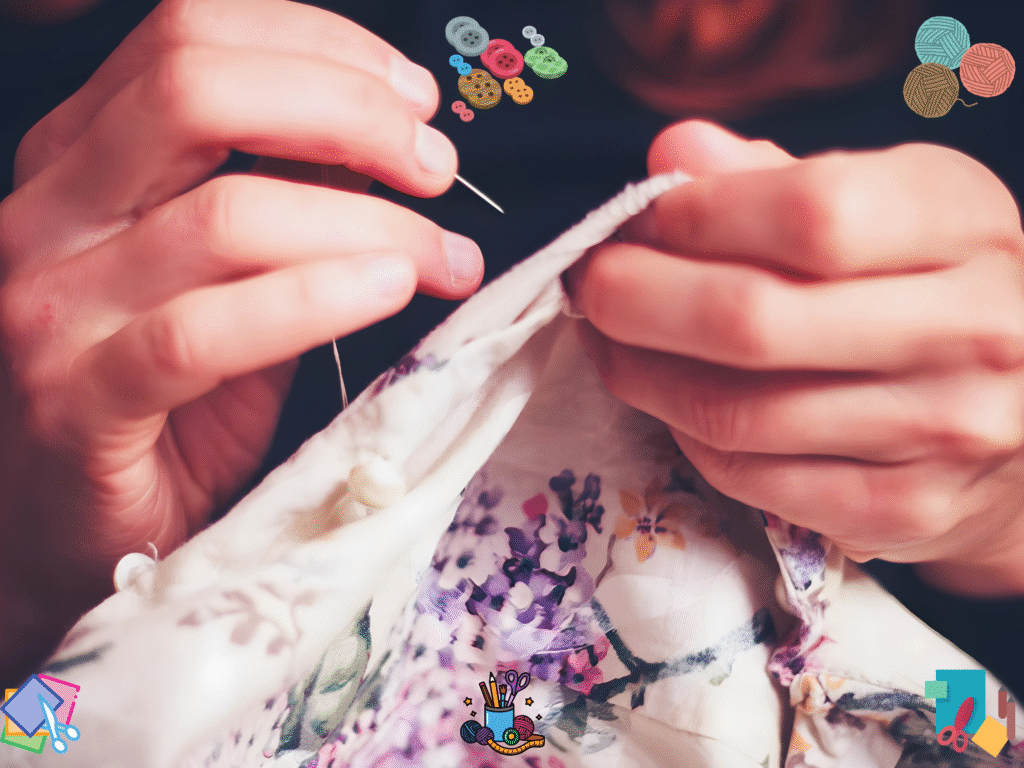
You can learn the running stitch and the backstitch in one evening. These two stitches help with mending, simple bags, and felt crafts. The Spruce Crafts has beginner friendly stitch lessons with photos that show each step.
Want a short video? Here is a quick backstitch tutorial to see the motion in real time.
Once you know the backstitch, you can stitch seams that hold. Add a simple whipstitch to close edges on felt and you can finish small gifts fast.
2) Crochet: One Hook, One Ball of Yarn
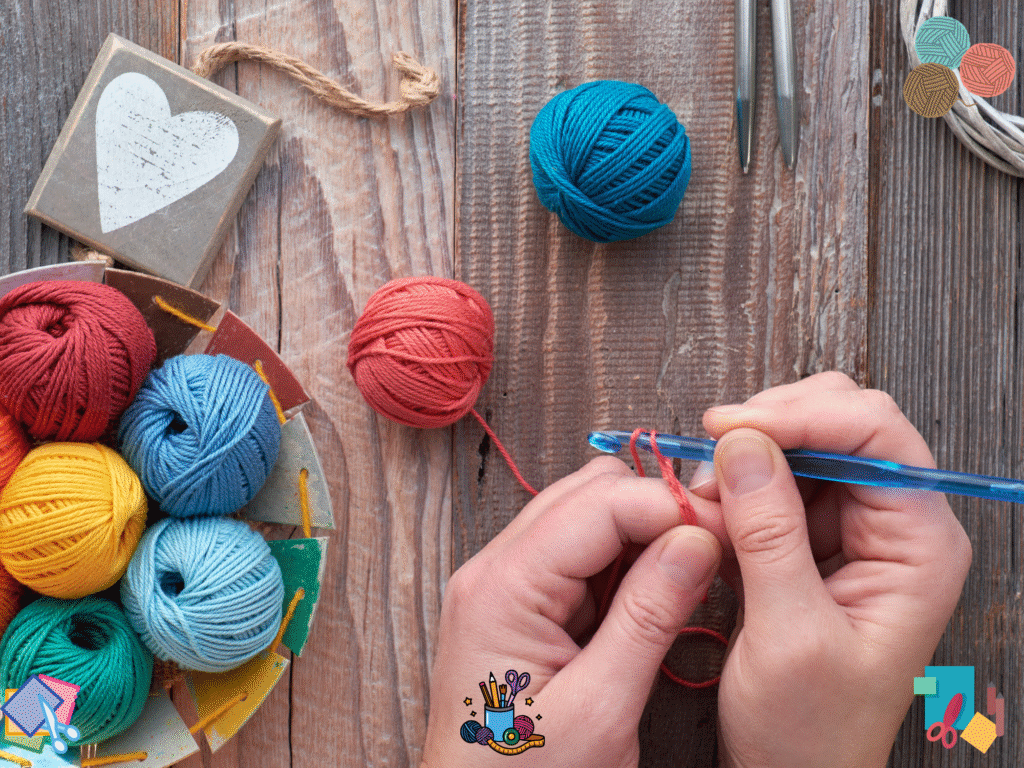
Crochet starts with a slip knot and a chain. Then you learn the single crochet. A size H 5.0 mm hook and a medium 4 yarn are a friendly pair for new hands. The Craft Yarn Council size chart helps you understand hook sizes if you see a letter or a number on the package.
Yarnspirations has step by step beginner pages and videos for the chain and first stitches. They are short and clear, so you can learn in small bites.
Smart Places to Find Budget Tools
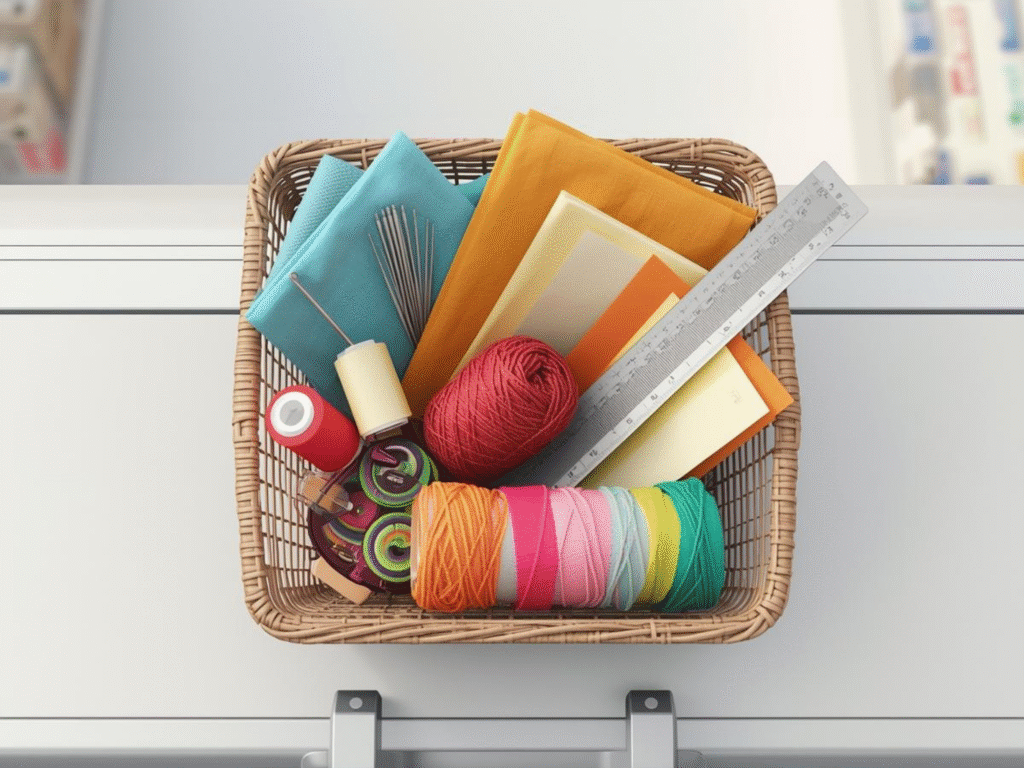
Discount stores and big box craft aisles often carry starter items at low prices. Dollar Tree has an Arts and Crafts Supplies section with basics like felt, foam, stickers, and small tools. It is a good place to stretch your list.
For low cost tools like hand sewing needles or a mini glue gun, Walmart listings show a wide price range that includes budget options. Scan for mini guns under $10 and basic needle packs in the low single digits.
Tip: pick up items over time. Start with needles, thread, scissors, tape, and a seam ripper. Then add the crochet hook and yarn. Add the glue gun last if your first projects need it.
Three First Projects You Can Finish Fast
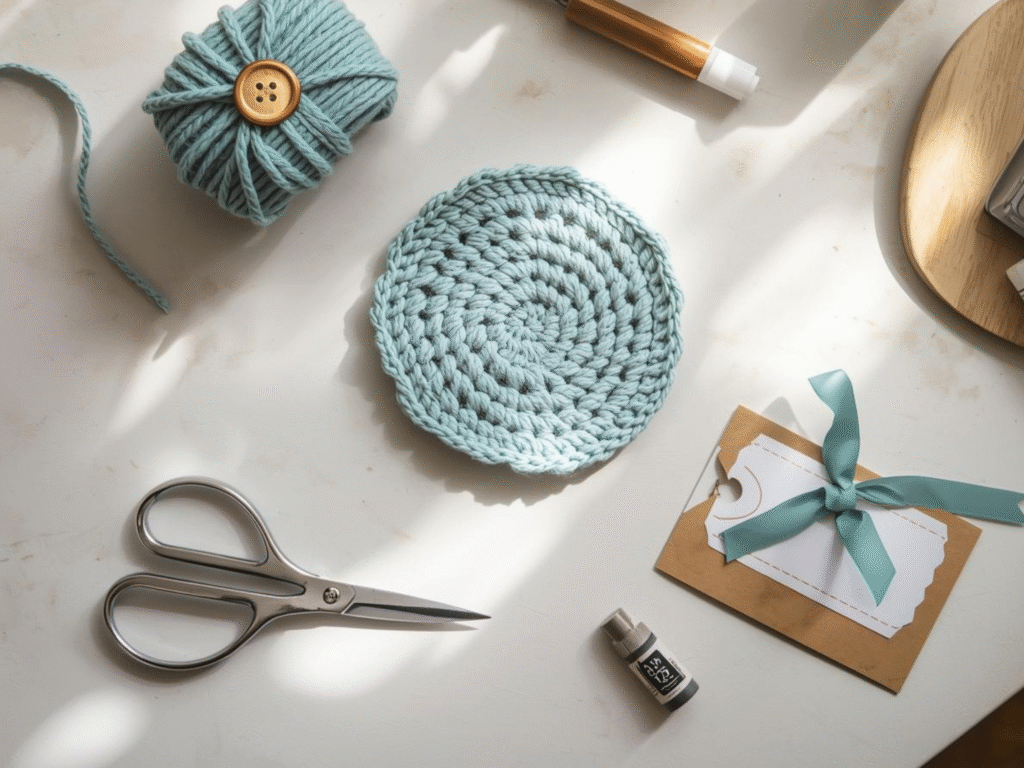
- Felt cord wrap
Cut a small rectangle of felt. Fold it over a phone cord. Use two small stitches and a snap or a button. This simple organizer builds hand sewing skills. - Crochet mug rug
Chain 16. Work single crochet back and forth for 12 rows. Tie off and weave the ends. It teaches you the chain, tension, and tidy edges. Check out these videos for more assistance. - No sew gift tag with glue
Cut a tag shape from cardstock or felt. Add a paper label and a small ribbon. Use white glue or a hot glue dot. It is a quick win that uses your ruler, knife, and glue.
How To Keep Costs Down
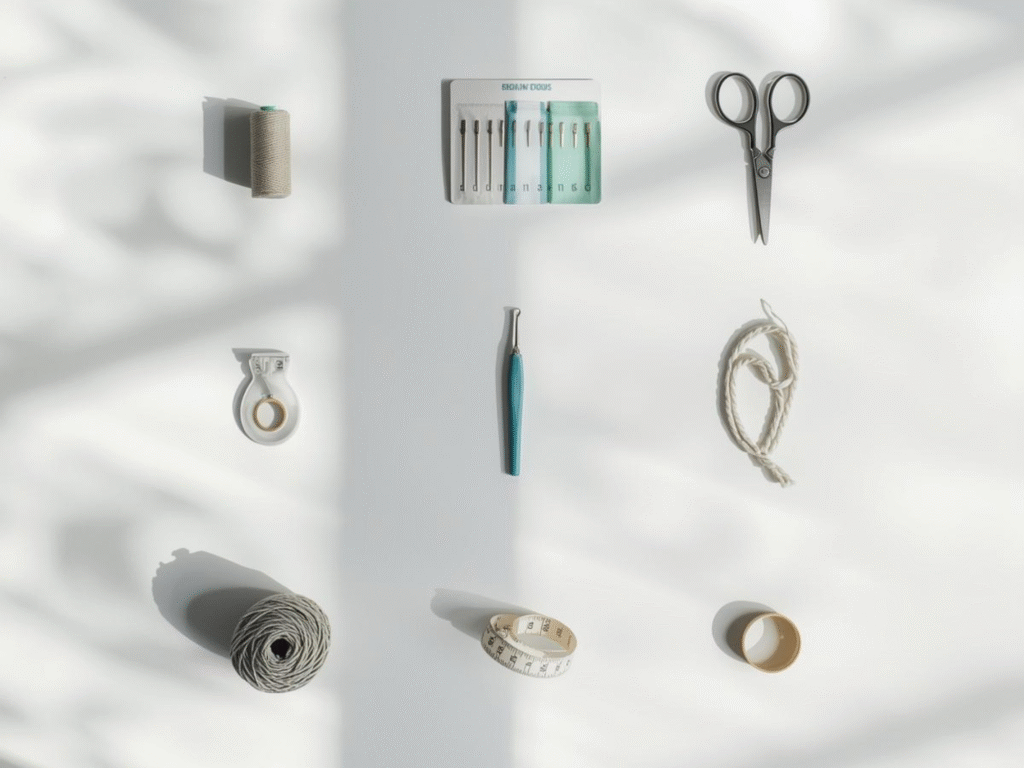
- Start with one path. Choose hand sewing or crochet for month one.
- Shop your home. Old shirts become practice fabric. Scrap ribbon becomes tag ties.
- Buy single items, not big sets. You only need one hook, not ten.
- Swap with friends. Trade a ball of yarn for fabric scraps.
- Use store coupons and clearance bins.
- Try a small diy kit only if it teaches a skill you want right now.
For a deeper plan to save money on tools and materials, see our guide on Budget Friendly Crafting. It lays out where to spend and where to wait.
What To Upgrade Later
Once you finish a few projects, think about these upgrades.
- Fabric shears for cleaner cuts if you sew a lot.
- Self healing cutting mat if you build paper crafts or quilt blocks.
- Extra crochet hooks once you try more stitch patterns and yarn weights. The size chart from the Craft Yarn Council helps you pick the next size.
Wait on big buys like a sewing machine. You can make many items with hand stitches. A small backstitch seam is strong and neat when you practice.
You can also find free planners and checklists on Trusti ASG. Use them to plan your first buys, track what you already own, and list low cost project ideas.
Free Beginner Kit Under $50 Planner
Download the free, easy-to-use template in the link below to make life a little easier for you as you start your fast crafting journey:
Final Word: You Can Start Today
This plan is for cheap crafting that still feels good. Pick one beginner craft. Keep your kit small. Practice for a week. Then make a tiny gift for someone you love or for yourself. When you finish that first piece, you will feel proud. You will also know if you want to add one more tool next month. That is the simple path to a fun hobby that fits your life and your budget.

